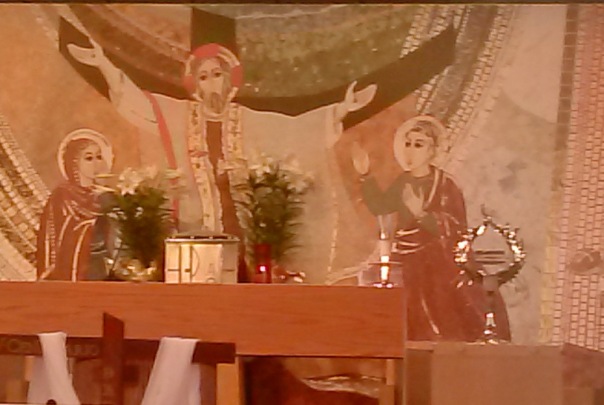Confessions of a
Liturgy Snob are reflections on good liturgy.
It is not intended as a having an
axe to grind for any particular prelate.
Laus Deo for men answering the divine calling to the priesthood, otherwise the faithful
would not have access to the sacraments, particularly the Eucharist in which we
receive the Body, Blood, Soul and Divinity of Jesus Christ.
The ordained
priesthood can have varied charisms.
Some can preach as eloquantly as St. John Chrysostom (Greek for
"golden mouthed"). Others
exude intellectual understandings of the faith from their scholarly natures,
like San Ysidro de Sevilla. There are
priests blessed with the sacramental sensibilities of St. John Vianney. Some priests are beloved for their folksy,
down to earth, accessible natures.
Priests can have pastoral sensibilities in living their vocation. Some are great stewards and administrators. Then there are natural fundraisers. Thus, personalities and predilections impact
the ars celebrendi, and admittedly not all clerics are called excell at ars
celebrendi.
That being said,
there is a rubric which all must follow for public worship. It is a pity that some priests, who generally
were formed in the early days of Vatican
II, want to cling to the loosey-goosey liturgical norms. Comme le prévoit (1969) which allowed for a dynamic
translation of the Mass to inculturate.
This gave the Presider many opportunities to offer equivalent
expressions of prayer.
Alas, the dynamic translation exception opened the door to what might be derisively called the Fr. Hollywood show, where the priestly improv is at the center of the liturgical experience. The third edition of the Roman Missal by ICEL in 2011 was intended to put an end to the idiomatic expressions, but it seems that some cleric do not cotton to being told how to say "their" Mass.
Alas, the dynamic translation exception opened the door to what might be derisively called the Fr. Hollywood show, where the priestly improv is at the center of the liturgical experience. The third edition of the Roman Missal by ICEL in 2011 was intended to put an end to the idiomatic expressions, but it seems that some cleric do not cotton to being told how to say "their" Mass.
Confessions of a
Liturgy Snob seeks to be charitable when considering liturgical abuses. So
whenever possible, the site will not
directly name the recalcitrant cleric in question, unless the priest's name is
in the general news. However, it is
necessary to find ways to describe a priestly protagonist to delineate the
experience. This will likely be
accomplished by resorting to descriptive monickers (e.g. Fr. Hollywood). However, such anonymity shall not be applied
to the Church in question so readers know what to expect at a given
parish.
The Via Dolorosa
("the painful way") is not just an allusion to the pathway in
Jerusalem which makes up the Stations of the Cross. In this case, it is a recognition that a
liturgy snob will be inclined to chronicle things which are irksome rather than
praiseworthy practices. For someone who
truly cares about good liturgy, it is painful to perseverate on bad
liturgy. Yet if a Liturgy Snob opts to just do some version of "Let It Go", then he has stopped caring.
The Via Dolorosa conceit also is an acknowledgement of a certain
powerlessness in rectifying liturgical abuse.
A cleric who is confirmed is doing things his own way, right or wrong is
unlikely to change, even with dialogue and proper citations from the G.I.R.M.
(General Instructions on the Roman Missal).

Dominican Friar Fr. Phillip Neri Powell OP alluded in Domine, Da mihi hacnc aquam, "Liturgical Poundians" (modernists) are on the decline. But Powell cautioned against more traditionally minded younger priests arbitrarily changing course from the "Spirit of Vatican II" liturgical revolution simply when they gain the reigns of power. Catechesis, contemplation and consensus would make for good liturgy which does not alienate the faithful.
Confessions of a
Liturgical Snob can be both a cathartic for enduring less praiseworthy liturgy
but in fostering discussion and discernment of what is good liturgy.


